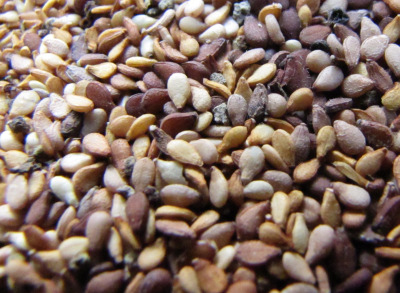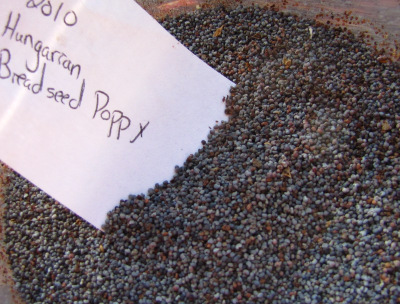
Less successful experimental crops
 We
tried a heaping handful of experimental crops in this year's garden,
and I've already reported on some of the successes (like our amaranth and urd beans) as well as some of our
failures (like some of our other experimental
beans.) In the
interest of sound science, here are the yields of three of our low to
moderately successful crops.
We
tried a heaping handful of experimental crops in this year's garden,
and I've already reported on some of the successes (like our amaranth and urd beans) as well as some of our
failures (like some of our other experimental
beans.) In the
interest of sound science, here are the yields of three of our low to
moderately successful crops.
Temuco
quinoa was our
absolutely least successful experiment --- we got nothing out of our
experimental bed. On the one hand, the quinoa was heavily nibbled
by deer, but everything else in the garden somehow managed to rebound
while the quinoa sat there for weeks looking sadder and sadder until I
pulled it out. I might try another variety of quinoa another
year, but for now I'm marking it off my list.
Afghan
sesame is also an
experimental crop I won't be replanting. Most of our sesame
plants came down with some sort of disease that twisted their stalks
and held them back, but they did grow and bloom. I was thrilled
to see seed pods forming, but less thrilled when I realized that the
variety I had planted ripens pods a few at a time. My internet
research had let me to suspect that I could just harvest the entire
stalks after the frost, but I instead decided to yank them out a few
weeks early since about a third of the pods had already opened and
released their seeds. When I finally got around to threshing and
winnowing the dried pods, I discovered that my total yield from the
garden bed was about a tablespoon. In the plant's defense, I had
grown the sesame in the waterlogged back  garden,
and I now know they prefer dry feet. Still, I'll be doing more
research before trying sesame again.
garden,
and I now know they prefer dry feet. Still, I'll be doing more
research before trying sesame again.
Hungarian
breadseed poppy
was a moderate success. Total yield from half of a garden bed was
about three or four tablespoons --- enough for a few special
treats. On the other hand, Renee's Garden sent me a tiny, tiny
packet of seeds, so I suspect I could have planted the seeds more
thickly and gotten a higher yield. Since poppies provide early
spring nectar for the honeybees, I'll keep planting them even though
they weren't terribly productive.
Want more in-depth information? Browse through our books.
Or explore more posts by date or by subject.
About us: Anna Hess and Mark Hamilton spent over a decade living self-sufficiently in the mountains of Virginia before moving north to start over from scratch in the foothills of Ohio. They've experimented with permaculture, no-till gardening, trailersteading, home-based microbusinesses and much more, writing about their adventures in both blogs and books.
Want to be notified when new comments are posted on this page? Click on the RSS button after you add a comment to subscribe to the comment feed, or simply check the box beside "email replies to me" while writing your comment.
